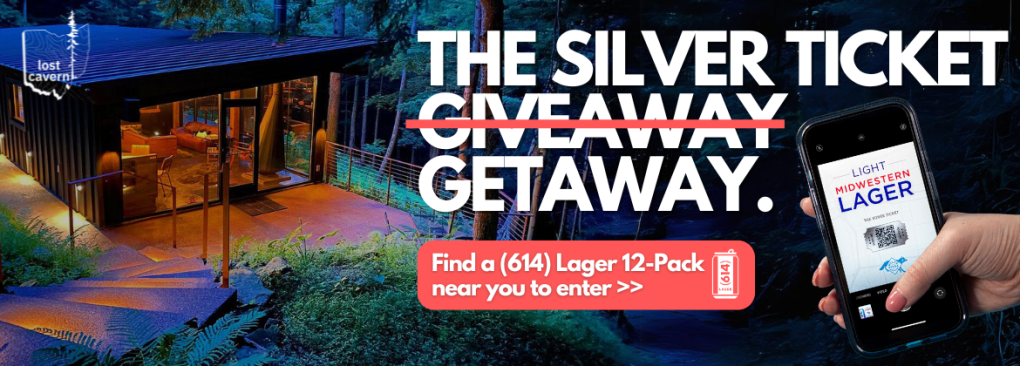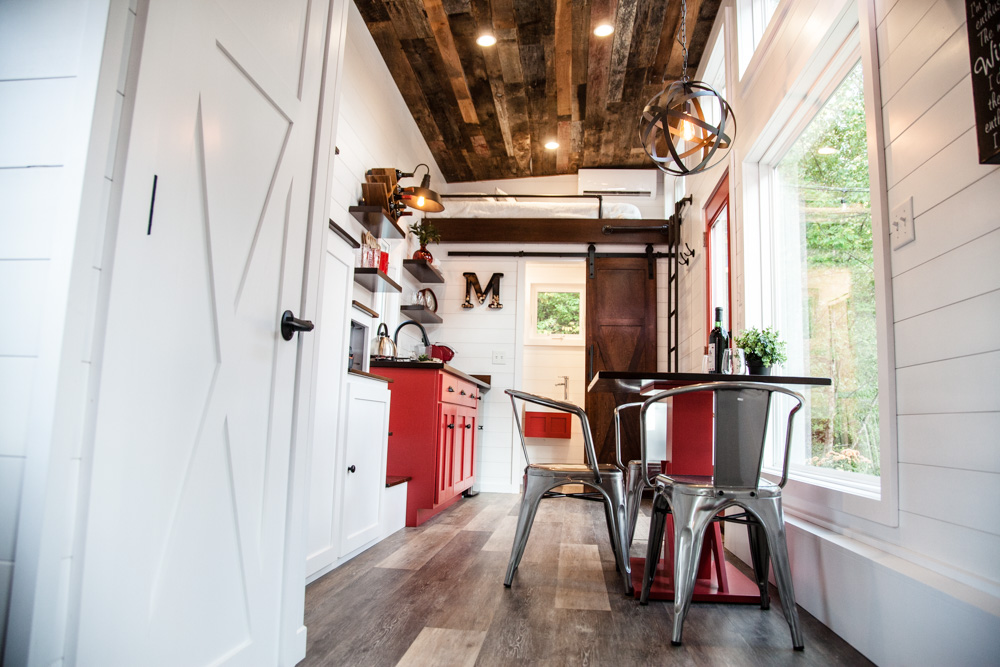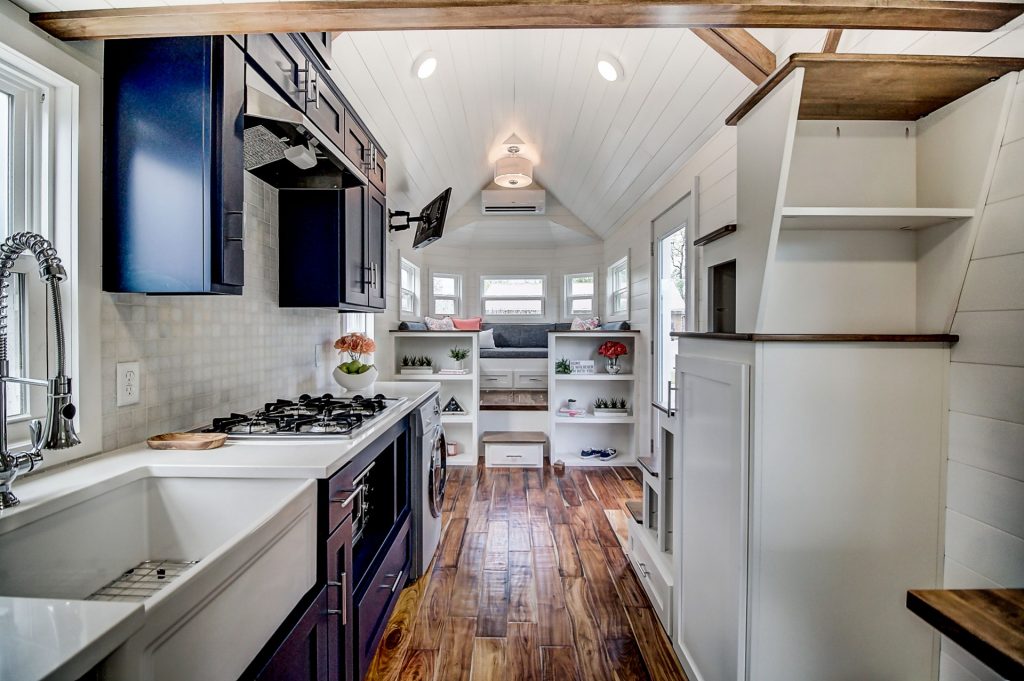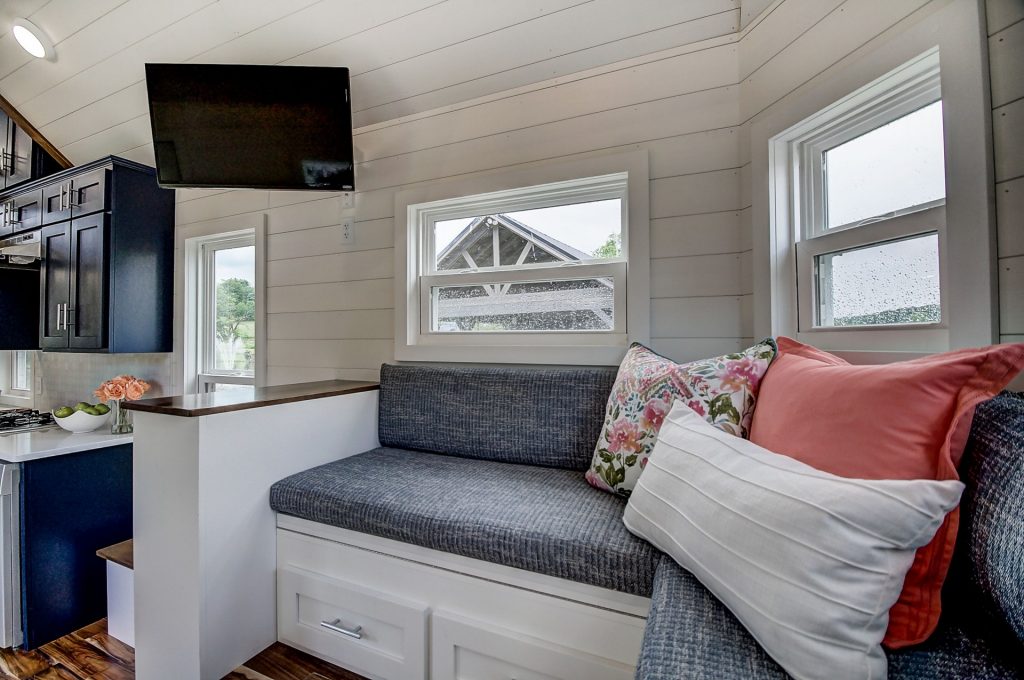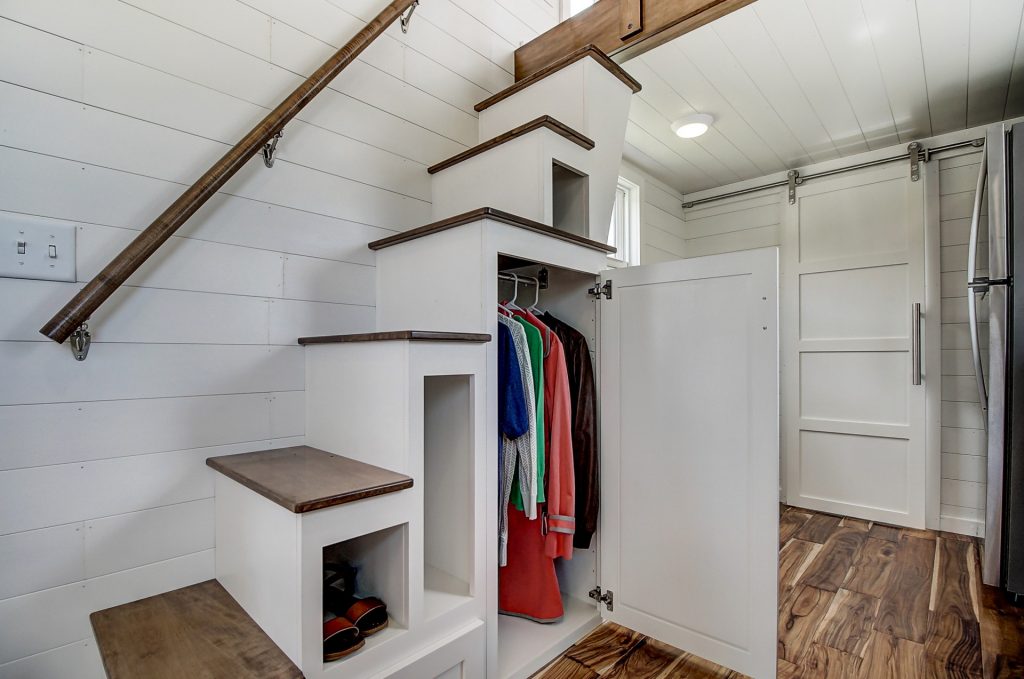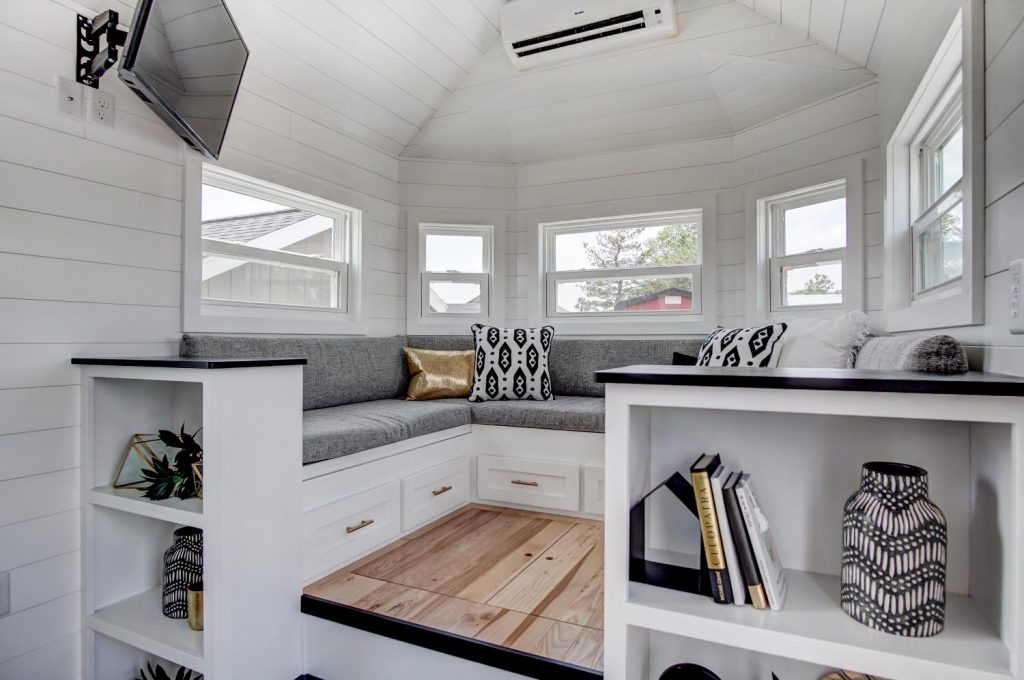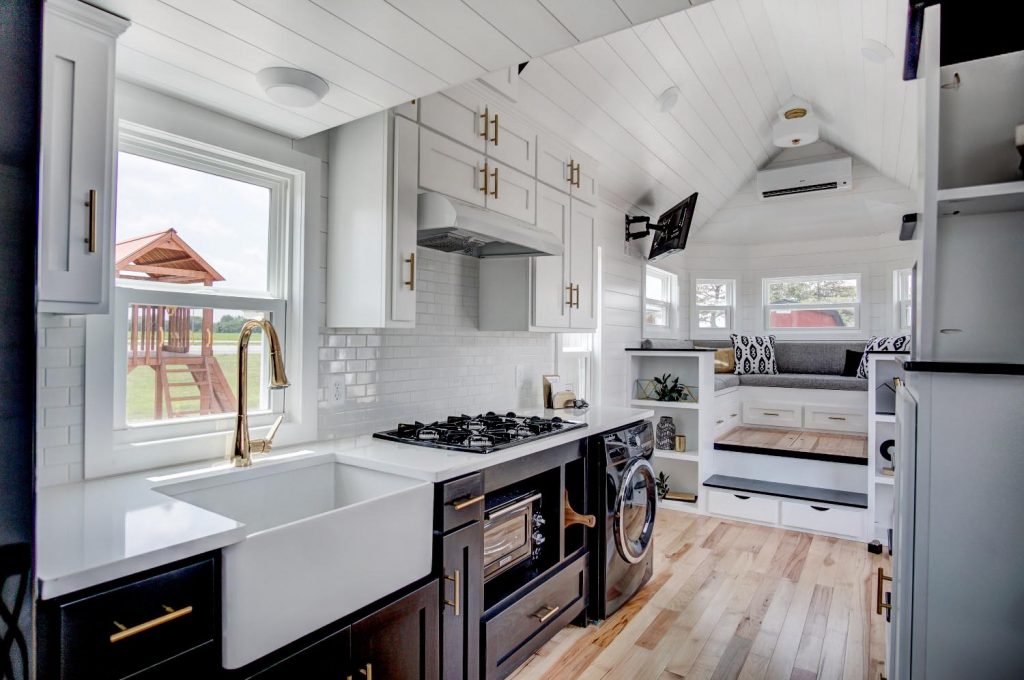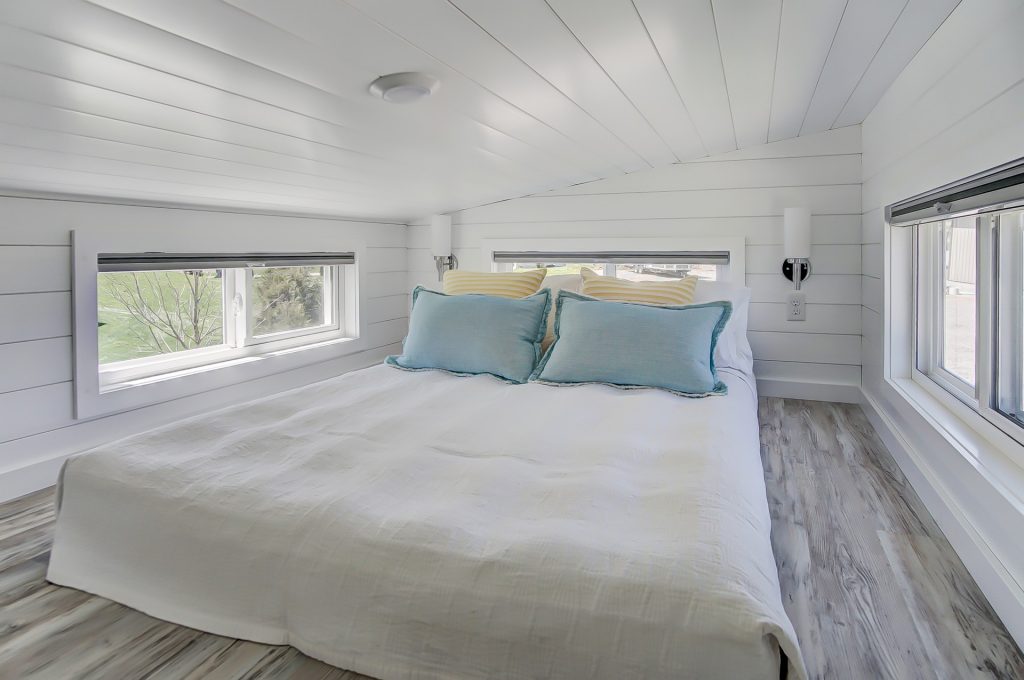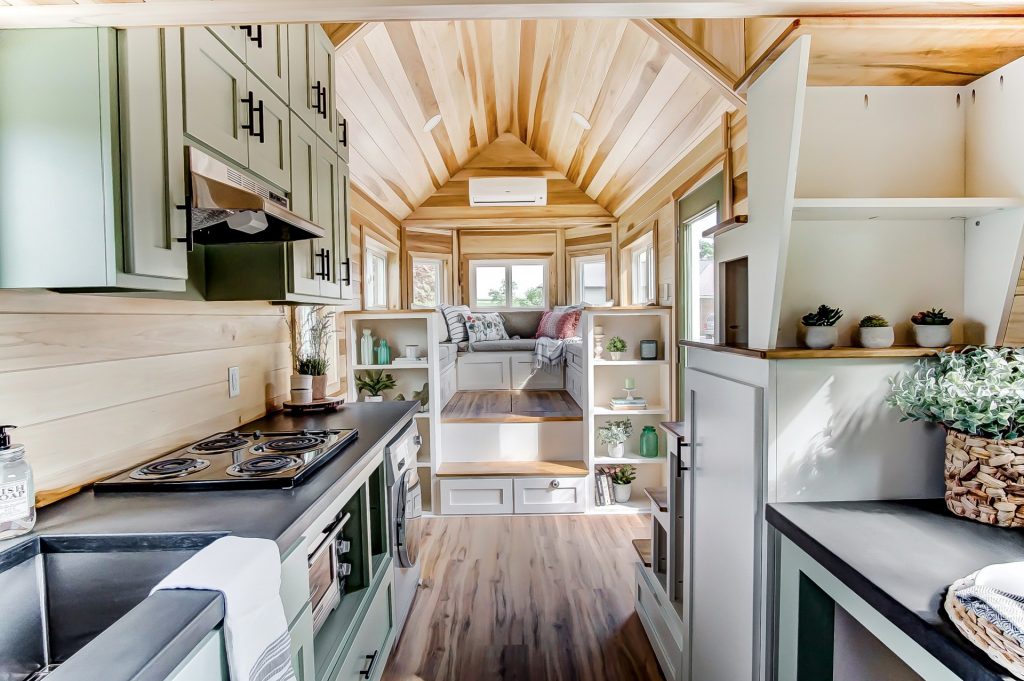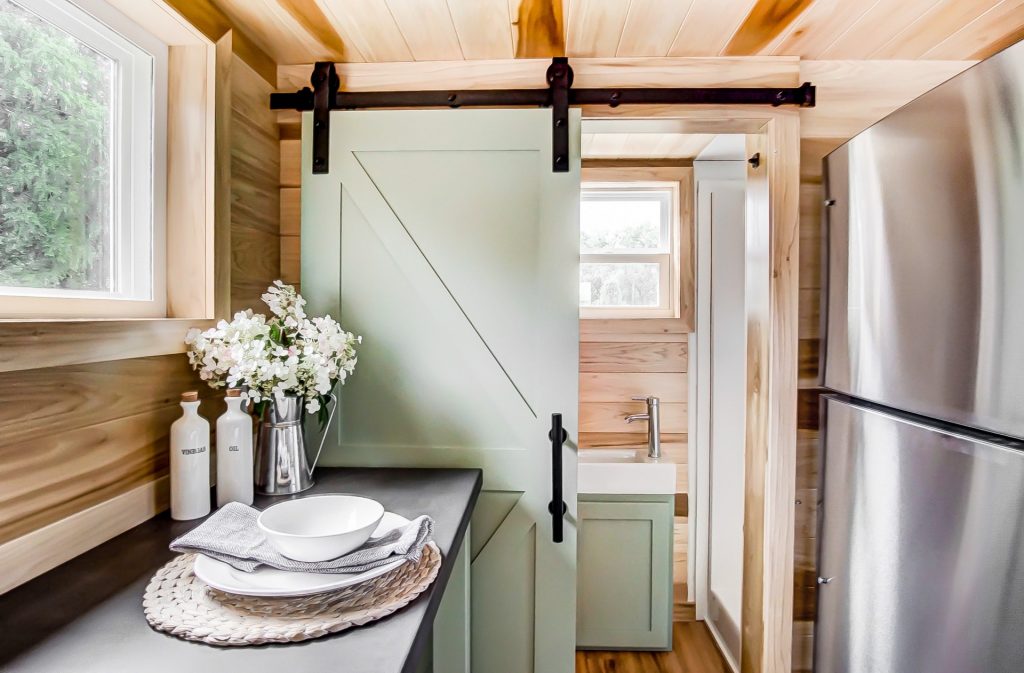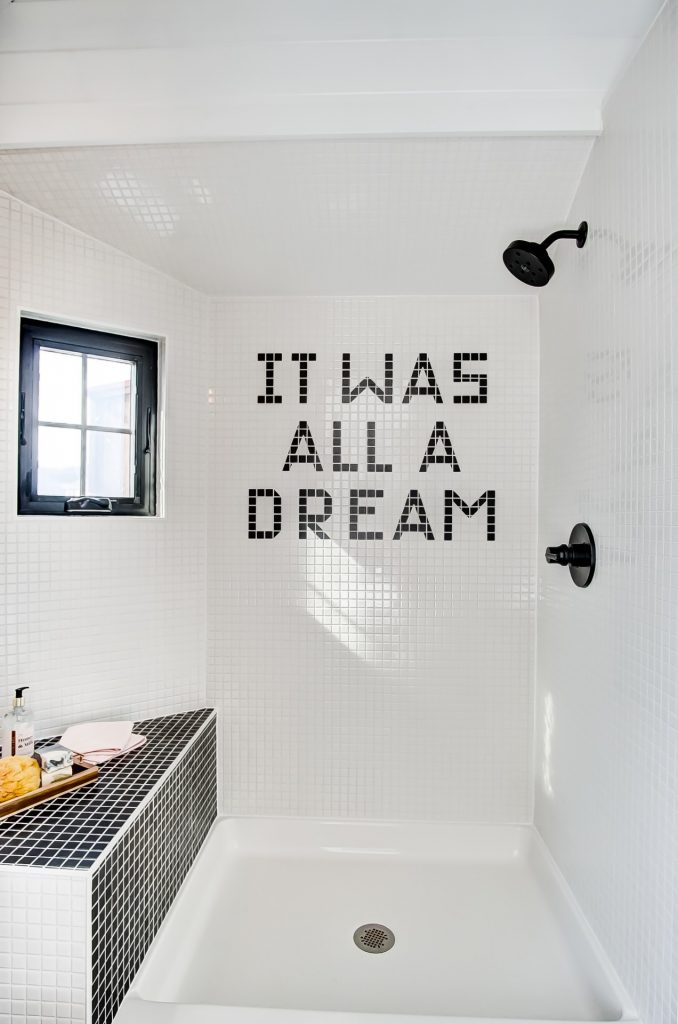Tiny Living: Going small to go big

If you could trade in most of your possessions, along with the responsibilities that fall upon most homeowners, would you? Could you live without a lawn, without most of your furniture, a driveway, and no space for guests?
Would you be comfortable in close quarters with an intimate partner? With children?
If these questions terrify you, run fast from Columbus tiny house pioneers Modern Tiny Living. But if you’re, at the least, intrigued—or outright excited—by the benefits of downsizing, this thriving company could hold the key to unprecedented freedom.
Founded in 2016 by a group of longtime friends, Modern Tiny Living is driven by “the opportunity to do something greater,” says co-founder Trent Haery.
“My friends and I have always sort of been unconventional thinkers, looking for ways just to—as much as it is financially but also through time—to have some sense of liberty. And we felt also that the tiny house movement is right in line with our values.”
The friends took stock of the existing tiny home industry and found room to innovate, working with an experienced architect already familiar with the unique specifications of tiny homes. They sought to shift the industry standard from small cabins to upscale, modern living spaces.
“The results and the feedback would suggest we were right: that people want to go tiny. However they might not necessarily want to downgrade the quality of their interior. Hell, if anything, they want to upgrade because they say, ‘Alright, I’m not gonna go with the national average [mortgage]…. Therefore I will spoil myself with a quartz countertop and tile backsplash, and this, that, or the other.”
MTL’s building process varies for each individual tiny house order, a flexibility due to its relationship with Amish carpenters in Northern Ohio, and a company insistence on excellent customer service.
Their three standard models—The Kokosing (24 ft. trailer, 256 sq. ft.), The Mohican (20 ft. trailer, 230 sq. ft.), and The Point (20 ft. trailer, 240 sq. ft.)—start between $59,000 and $69,000. Final price is dependent on financing, included appliances, and other customizations. Each standard model has inspired dozens of custom variants, including a cowork space and coffee shop (“Upwork”), and a fully-solar, off-grid home with garage door and folding deck (“The Latibule”). Shells of their homes for the DIY-inclined are also available at roughly one-third of the price of a full tiny home.
BROUGHT TO YOU BY
“As builders out here, we bend over backwards to make our clients happy, and the degree of customization is incredible because that’s just where the industry is today,” says Haery. “Builders are willing to go above and beyond to just have one more happy client in that regard.”
That is, if buyers can overcome a couple of cumbersome barriers to entry, most notably financing and legality. The emerging industry, for all its marvel, is still hamstrung by lenders and local governments who are unprepared for the complexities of tiny living, unaccommodating to them, or both.
Squeamish large banks are uncomfortable with the portable homes and the absence of corresponding property that a typical mortgage would include as collateral, leaving buyers to urge credit unions and small, community banks for RV loans.
“Still, most lenders are not interested in doing RV loans to tiny house manufacturers, usually because they’re afraid somebody’s gonna live in [the tiny house] full time,” explains Haery. “It’s obviously a depreciating asset so you can’t really compare it to dirt that you get with the house on a traditional home.”
But hope is on the horizon. Koala Financial Group, a specific tiny house lender, appears to have cracked the code, and could soon offer reliable financing to buyers at competitive rates with down payments of roughly 5%.
“What they’re promising sounds too good to be true, so I’ll be absolutely floored if they can deliver on it. But I pray that it works out because it’ll make getting a tiny home so much more feasible for hundreds of thousands of people,” says Haery.
If affordable financing can be achieved, buyers must then deal with the patchwork of municipal and county codes that prevent tiny houses from being parked legally in certain areas. The city of Columbus and adjacent suburbs maintain building codes and/or zoning regulations that exclude tiny houses from being considered legal living spaces. Haery contends that an imminent exodus from conventional housing structures and mortgages looms if these issues are sorted out.
While tiny houses might seem perfect for nomadic, excitable travelers, the industry’s clientele is much more typical than you might expect. And if minimalism is an attractive concept, it’s less likely than pure financial reality to compel the curious to go tiny.
“A lot of people think of the tiny house industry—our clientele—as a bunch of nomadic people who just don’t want to be tied down to one location. I don’t think that’s it […] I don’t think they’re looking to get a tiny house because they’re minimalists.”
Haery has multiple theories as to why the tiny life is appealing, but believes that most of them boil down to a greater sense of freedom and more options.
“I think that’s a major benefit that tiny homes offer people is the option to have a place to live that they like, they’re proud of, they own, and it doesn’t feel like the word ‘mortgage’ is based on the word ‘death.’ It doesn’t feel like this is gonna be a bill until you’re dead. And that’s a nice liberating feeling—that you can go out to eat, you can take a vacation, and you don’t need to charge it, and you don’t need to be rich. You just need to downsize.”
Curious about tiny living options? Schedule a tour and ask questions at moderntinyliving.com/schedule.
Sidebar: Ways to go tiny, without the tiny home
So you’re not ready to take the tiny home plunge yet. Happiness really can be about wanting less, rather than having more. Try some downsizing ideas now, and maybe a tiny home will be in your future.
Storage
Think vertical. Think wall-mounted storage. Think ottomans and benches that open up to create extra storage space. Clear, stacking containers are best for frequently-used items.
Purchasing habits
Consider the life cycle of each item you purchase. How long to plan to keep the item? How often will you use it? Where will you store it? What will you do with it after it is no longer useful to you? Something you don’t bring into your home is something you don’t need to store or organize.
Declutter
That project you started but didn’t finish? Will you ever get around to it? What about those things you intend to fix but haven’t? Do you need that collection of trophies, memorabilia, or whatever, or would a set of pictures do? Don’t use sentimental attachments to necessarily determine what you should keep and what should go.
BROUGHT TO YOU BY


